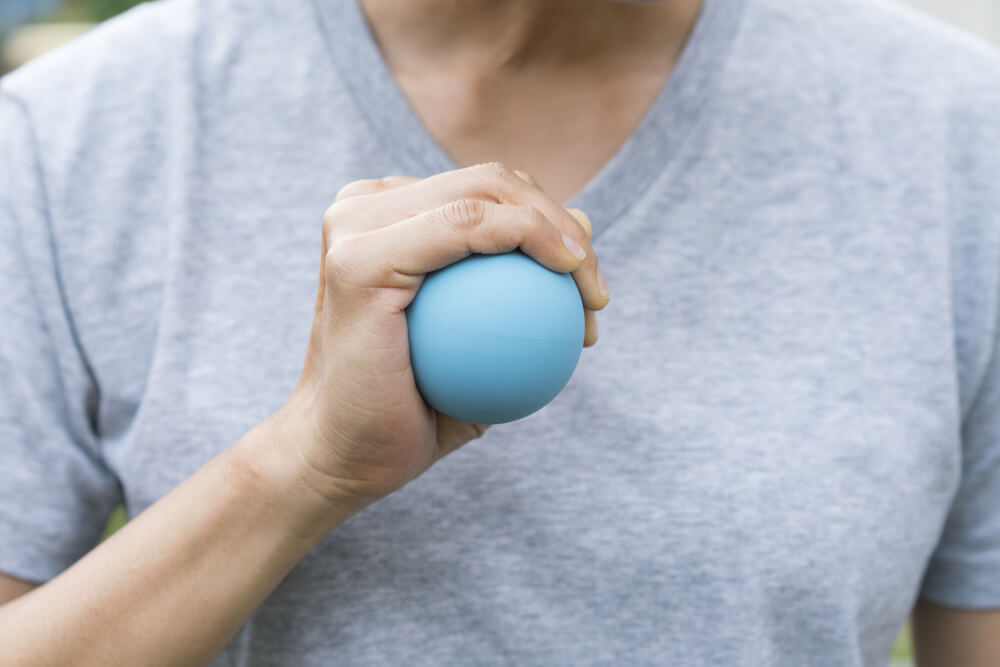Arthritis is a condition that is characterized by inflammation of the joints. It affects approximately 528 million people worldwide. The most common symptoms accompanying arthritis are pain, stiffness and reduced joint mobility. Arthritis can have a significant impact on the quality of life of those who live with this chronic condition. While arthritis doesn’t have a cure, several strategies can help manage its symptoms and improve your overall well-being.
Understanding arthritis pain
Arthritis pain is often described as a persistent, aching discomfort in the affected joints. Pain can range from mild to severe and can also interfere with your daily activities. There are over 100 different types of arthritis, but the most common types of arthritis are osteoarthritis (OA) and rheumatoid arthritis (RA). Each of these conditions has its own unique characteristics and challenges:
- Osteoarthritis (OA) — OA is a degenerative joint disease that is associated with aging and the wear and tear of the joints. OA primarily affects the cartilage, which is the protective cushioning between the bones. When it deteriorates, it can cause pain, swelling and reduced joint function.
- Rheumatoid arthritis (RA) — RA is an autoimmune condition where the immune system mistakenly attacks the synovium. Synovium is the lining of the membranes that surrounds the joints. This attack on healthy cells can cause inflammation, pain and potential joint damage.
What is good for arthritis pain?
Managing arthritis pain can involve a multifaceted approach to help address the physical and emotional aspects of the condition. Here are effective strategies to consider:
- Medications — NSAIDs can help reduce pain and inflammation. Acetaminophen may be recommended for pain relief without anti-inflammatory effects. Disease-modifying antirheumatic drugs (DMARDs) can also be prescribed for inflammatory types of arthritis like RA.
- Lifestyle modifications — Adopting several lifestyle modifications can be helpful to manage arthritis pain. It’s important to maintain a healthy weight to reduce the stress on weight-bearing joints like the hips and knees. You can exercise regularly to help maintain a healthy weight and to help improve joint flexibility, strength and overall function. Joint-friendly activities like swimming or cycling can help minimize the impact on your joints while keeping you active.
- Dietary choices — Eating foods rich in omega-3 fatty acids have anti-inflammatory properties that can help arthritis. Enriching your diet with antioxidant-rich foods like fruits and vegetables may also help reduce inflammation.
- Heat and cold therapy — Applying a heating pad or cold packs to the affected joints can help provide temporary pain relief. Warm compresses or hot showers can also help ease stiffness. Cold packs can help reduce inflammation and numb pain.
- Assistive devices — Devices like braces, splints or orthotic shoe inserts can help provide additional support and help alleviate stress on the joints. Canes or walkers can help you by reducing pressure on affected joints during weight-bearing activities.
- Physical therapy — Physical therapy is a beneficial treatment that is good for arthritis pain. Physical therapy can use targeted exercises to help strengthen muscles around the joints as well as improve flexibility and overall joint stability.
The role of physical therapy in arthritis management
Physical therapy can be a dynamic and personalized approach that is good to help with arthritis pain. Skilled physical therapists can be crucial in designing tailored treatment plans for each individual’s needs. Here are some key components of physical therapy for arthritis:
- Therapeutic exercises — Specific therapeutic exercises can help target the joints affected by arthritis. They can help improve muscle strength, flexibility and joint range of motion. Your physical therapist can tailor these exercises to the type and severity of your arthritis.
- Manual therapy — Hands-on techniques like soft tissue mobilization and joint mobilization can be good for arthritis pain. Soft tissue mobilization can help improve joint function and reduce pain. Joint mobilization involves gentle stretching movements to help restore range of motion and reduce stiffness in arthritic joints.
- Aquatic therapy — Aquatic therapy uses the buoyancy of water to help relieve stress on the joints. Aquatic exercises can help improve strength and flexibility.
- Dry needling — Certified physical therapists can use dry needling to help release tension and promote blood flow. Dry needling involves the insertion of thin, sterile needles into trigger points to help release arthritis-related muscle tightness and discomfort.
- Trigger point therapy — Trigger point therapy can focus on specific areas of muscle tightness by releasing knots and improving overall muscle function. This can be good for arthritis pain in localized areas.
Treatments that can be good for arthritis pain can draw on a number of conservative modalities, including physical therapy. These techniques not only help target the joints directly but can also help address associated muscle tightness and inflammation. A personalized treatment plan can help ensure the best combination of these treatment options to meet your individual needs. It’s essential to actively engage in managing your arthritis, working with your health care providers to find the most effective strategies for your pain relief. Finding the right approach can help improve your quality of life, reduce the effect arthritis has on your life and improve your well-being.
Navigate arthritis pain with Excel Sports & Physical Therapy
At Excel Sports & Physical Therapy, we understand the challenge posed by arthritis and are dedicated to helping you regain control over your life. Our experienced team of physical therapists uses evidence-based practices, incorporating various techniques to help address arthritis symptoms. Our personalized approach focuses on your unique needs, helping to promote long-term well-being. We can partner with you on your journey to find relief for your arthritis pain and help improve your quality of life.
Call us or request an appointment today for good treatment options for arthritis pain.

